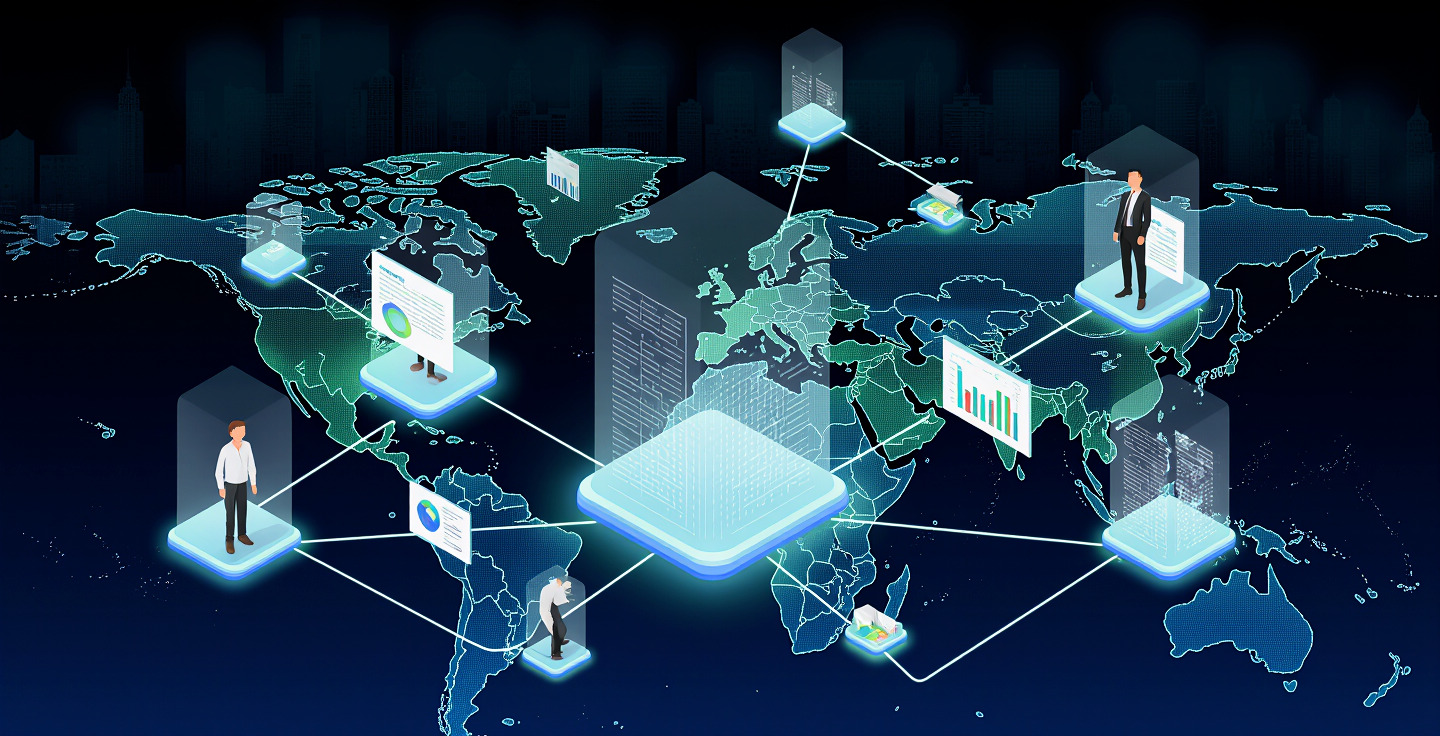How Outsourcing Is Powering the Edge Computing Revolution
- 1 min read
Outsourcing edge infrastructure and services boosts agility, reduces latency and unlocks scale — here's how B2B leaders can leverage it for competitive advantage.

Introduction
In the era of real‑time data demands and pervasive connectivity, edge computing has shifted from buzzword to business imperative. Organisations are recognising that processing data closer to the source is critical for latency‑sensitive applications, IoT expansion and new business models. (Dataversity)
At the same time, many enterprises face a shortage of specialised talent, operational complexity and the need for rapid deployment. This is where outsourcing edge computing infrastructure and services becomes a strategic lever. From our vantage working with European technology firms, Euro IT Sourcing sees a growing trend of combining edge deployment with outsourced expertise and managed services.
In this article we explore why outsourcing is powering the edge computing revolution, what challenges firms face, how outsourcing models are evolving, and how decision‑makers can seize the opportunity.
The Challenge – Why Edge Computing Matters and Why It’s Hard

Why edge computing matters
- Traditional cloud models often introduce latency, bandwidth cost and network dependency when data must traverse to central data centres. (Dataversity)
- Applications such as IoT, autonomous systems, real‑time analytics and 5G rely on rapid processing at or near the data source. For example, the US edge computing market is projected to grow to US$46.2 billion by 2033 at a CAGR of 23.7%. (IMARC Group)
- Analyst firm IDC forecasts global spending on edge computing services at US$261 billion in 2025, increasing further toward 2028. (Computer Weekly)
Why it’s hard to execute in‑house
- Building a distributed edge infrastructure demands new skills in edge architecture, connectivity, deployment at scale and remote operations. Analyses show talent availability for cloud and edge remains uneven. (McKinsey & Company)
- Managing many edge sites, ensuring performance, security, compliance and integration with cloud environments is complex and costly.
- Organisations may lack the scale or flexibility to deploy many edge nodes globally, across varying geographies and environments.
- Key decision‑makers must weigh cost, speed, operational risk and vendor selection when shifting toward edge models.
The Approach – Outsourcing as an Enabler for Edge
Modern outsourcing strategies for edge
- Partnering with specialist providers who can deploy edge infrastructure closer to end users, thereby reducing latency and network cost. (Business Wire)
- Using managed services or outsourcing models for remote operations, monitoring and updates of distributed edge nodes, alleviating the burden of in‑house management.
- Applying multi‑cloud and hybrid cloud frameworks that incorporate edge nodes as part of the overall infrastructure stack, outsourcing providers facilitate orchestration.
- Leveraging outsourced talent to supplement internal teams: specialist engineers, edge‑specific platforms, connectivity and hardware expertise. As one industry trend report notes, “Rising demand for cloud, AI/ML and edge computing has out‑paced the supply of qualified talent. Outsourcing now functions as a gateway to specialised skills.” (Growth Acceleration Partners)
Key risk‑mitigation and best‑practice considerations
- Define clear latency, throughput, resilience and security SLAs for edge deployments.
- Ensure outsourcing provider has local presence and infrastructure where necessary (data residency, regional compliance). For Europe this is increasingly critical. (Grand View Research)
- Consider scalability: choose models that allow incremental edge node rollout opposed to large upfront investments.
- Ensure integration capability: edge operations must tie back to cloud, analytics and business workflows seamlessly.
- Governance, compliance and cybersecurity frameworks must be built into distributed edge outsourcing arrangements.
The Technology Factor - How Tools, Frameworks and Outsourced Models Solve It
- Edge‑native hardware, software defined infrastructure and lightweight containers are enabling deployment of micro‑data centres or “edge nodes”. Outsourcing providers often offer these pre‑configured.
- Automation, remote monitoring and AI‑driven operations tools allow outsourced edge deployments to scale while controlling operational overhead.
- Connectivity technologies (5G, private networks, hybrid WAN) are vital for edge success; outsourcing providers often bundle connectivity with infrastructure.
- Edge computing outsourcing is increasingly referenced in data‑centre outsourcing reports, reflecting that “enterprises partner with data centre service providers to deploy infrastructure closer to end‑users, improving latency and performance.” (GlobeNewswire)
Industry Insight
Edge computing and outsourcing are converging rapidly. The data‑centre outsourcing market was around US$132.3 billion in 2024 and is expected to grow to US$243.3 billion by 2034. (GlobeNewswire)
Meanwhile, edge computing spending is forecasted to grow at double‑digit rates, indicating that a large portion of future infrastructure investment will be closer to the network edge. (Computer Weekly)
For B2B decision‑makers the implication is clear: infrastructure provision is shifting from centralised cloud to distributed edge+cloud models, and outsourcing is emerging as the practical way to keep pace — especially when internal capabilities are limited.
Results or Impact
By adopting outsourced edge computing models, companies have achieved measurable benefits:
- Reduced latency: Edge nodes deployed closer to data sources lead to faster responses for critical applications such as manufacturing automation or network monitoring.
- Scalability: Outsourcing allowed an organisation to roll out 10s‑to‑100s of edge sites across geographies without building internal teams in each location.
- Cost‑efficiency: By shifting operations to an external provider, firms reduced their upfront investment in hardware, specialist staffing and managed maintenance.
- Operational focus: Internal teams regained bandwidth to focus on higher‑value innovations rather than day‑to‑day infrastructure operations.
- Compliance and risk mitigation: Outsourcing providers with mature security frameworks and local presence helped meet regulatory obligations more smoothly and ensured resilience.
Industry benchmarks: Given the projected ~6‑7% CAGR for data‑centre outsourcing and ~20‑25%+ CAGR for edge computing, firms that align their outsourcing strategy with edge rollout are positioned to capture disproportionate value. (Grand View Research)
Author: Matt Borekci Contact Us: Euro IT Sourcing

Turkish Tech Renaissance: The Remarkable Growth of the IT Industry
Turkey's IT industry is rapidly growing, driven by its strategic geographic location, a young and educated workforce, and strong government support. The country's thriving startup ecosystem, emphasis on digital transformation, and increasing IT exports are positioning Turkey as a significant player in the global technology landscape. This growth trajectory highlights Turkey's potential and ambition in shaping the future of technology both domestically and internationally.

TURKIYE: The Rising Star of IT Outsourcing
Turkey is quickly becoming a key player in the IT outsourcing industry, thanks to its strategic location, skilled workforce, and cost-effective solutions. Positioned between Europe and Asia, Turkey offers businesses access to top-tier IT talent at competitive prices, with minimal language and cultural barriers. The country's commitment to data protection and innovation further enhances its appeal as a reliable and cutting-edge IT outsourcing partner.